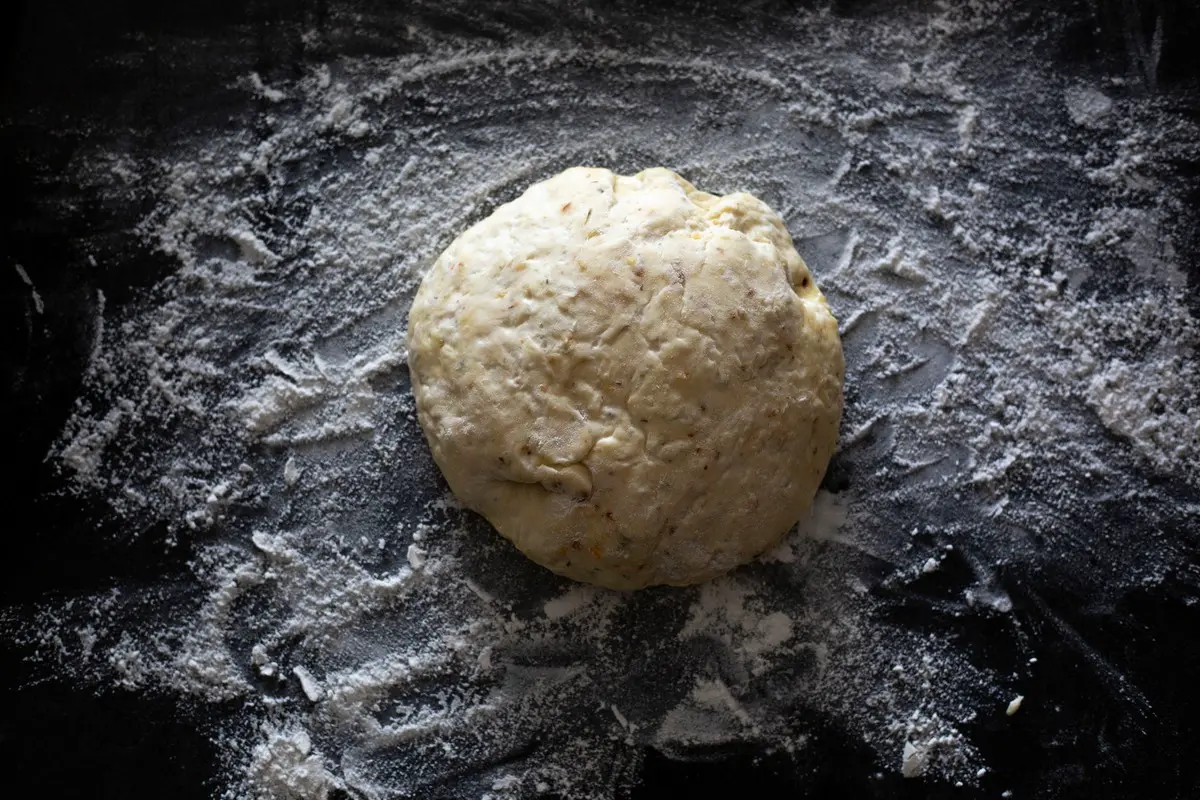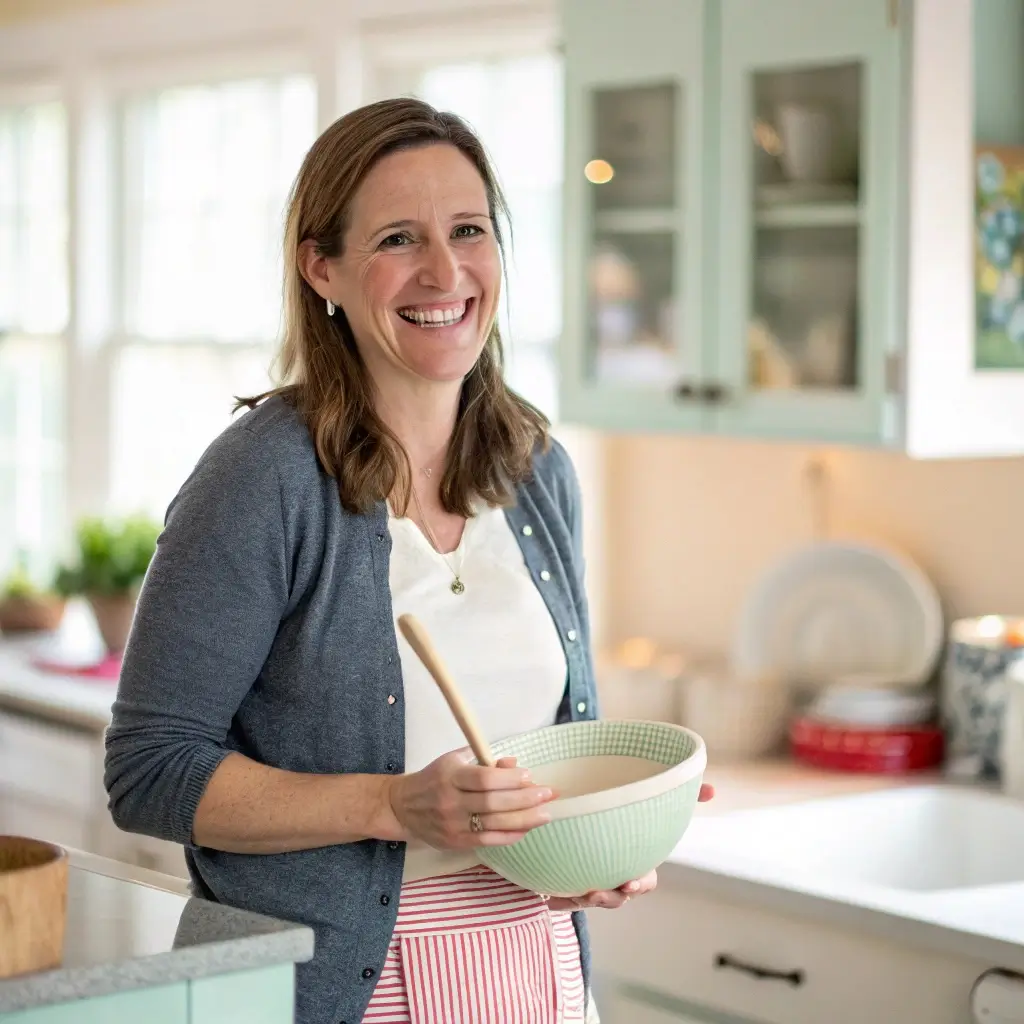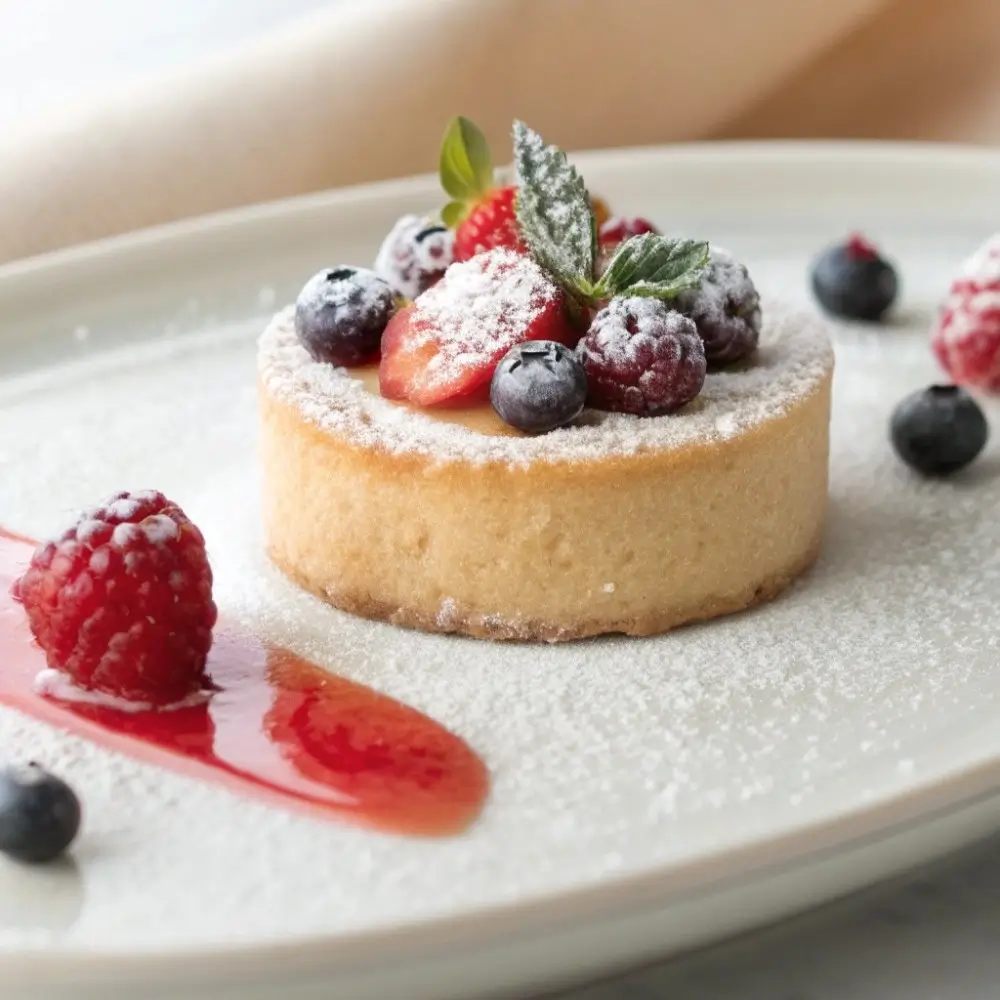Table of Contents
- 1 The Importance of Sourdough Discard in Baking
- 2 Difference Between Sourdough Starter, Discard, and Levain
- 3 Storing Sourdough Discard
- 4 Minimizing Waste
- 5 Sweet Sourdough Discard Recipes
- 6 FAQs on Sourdough Discard
- 7 Commonly Asked Questions
- 8 Further Explorations with Sourdough Discard
- 9 The Science Behind Sourdough Discard
- 10 Advanced Sourdough Discard Techniques
- 11 Conclusion and Call to Action
- 12 Wrapping Up
- 13 Encouragement to Try Sourdough Discard Recipes
Embarking on the sourdough journey isn’t just about baking the perfect loaf; it’s about embracing a culture of creativity and sustainability. With the rise of home baking, many have discovered the wonders and challenges of maintaining a sourdough starter. The cycle of feedings results in an inevitable by-product: sourdough discard. But what if we told you that this so-called “discard” is a treasure trove of culinary potential? This article dives into the world of sourdough discard recipes, transforming what you might consider waste into delectable treats. From the tangy twist in pancakes to the subtle sour notes in a crispy pizza crust, we’re here to guide you through creative ideas to use your starter in every meal, ensuring that your sourdough journey is as fulfilling as it is delicious. Let’s not waste a drop of potential; after all, in the world of sourdough, every bit has the power to transform.
Understanding Sourdough Discard
The Importance of Sourdough Discard in Baking
Sourdough discard might seem like a humble by-product of your starter’s feeding routine, yet it’s a hidden gem in the baking world. Incorporating discard into your recipes not only reduces waste but infuses your baked goods with a unique depth of flavor. This slightly tangy, fermented dough can add complexity and a delightful twist to many recipes, from savory delights to sweet treats. It’s all about getting creative and understanding how this ingredient can elevate your baking game.
Difference Between Sourdough Starter, Discard, and Levain
Navigating the sourdough terminology can be a bit perplexing at first. Let’s break it down:
- Sourdough Starter: This is the living yeast culture you feed regularly. It’s your bakery’s powerhouse, responsible for the rise and the characteristic tangy flavor of sourdough bread.
- Sourdough Discard: When you feed your starter, you often have to remove some of it to avoid ending up with too much. This removed portion, the discard, might not be active enough for leavening bread, but it’s perfect for adding flavor to a wide range of recipes.
- Levain: This is essentially a ready-to-use portion of your starter. It’s what you’ll mix into your dough for baking. It’s been fed and is full of active, hungry yeast, ready to leaven your bread.
Understanding these distinctions helps you optimize your sourdough routine, ensuring nothing goes to waste and everything is used purposefully. So next time you’re about to toss that discard, remember: it’s a precious ingredient waiting to be transformed into something delicious.
Stay tuned as we delve into storing and managing sourdough discard in the next section, ensuring your sourdough journey is both tasty and waste-free.
Remember, your sourdough journey is a path of discovery. There’s a world of flavors waiting in what you might consider waste. Explore our sourdough basics to start your adventure with confidence and creativity.
Storing Sourdough Discard
After you’ve separated your sourdough discard from the active starter, the question arises: What’s the best way to store it? Proper storage is key to preserving its quality and extending its usefulness. Here’s a handy tip: think of your discard as a postponed promise of delicious recipes to come.
- In the Fridge: For short-term storage, the fridge is your best friend. Stored in a sealed container, your discard can comfortably rest for up to a week, ready to be transformed into your next culinary creation. It’s a pause button, allowing you to accumulate enough discard for a recipe or two without the worry of it going bad.
- Can You Freeze Sourdough Discard? Absolutely! For those who don’t bake with discard as frequently, freezing offers a fantastic solution. Portion the discard into ice cube trays or small freezer-safe containers. Once frozen, transfer the cubes to a freezer bag. This method not only extends the discard’s life but also makes it super convenient to thaw exactly the amount you need for a recipe.
Minimizing Waste
The art of sourdough is as much about baking as it is about embracing sustainability. Here’s how you can minimize waste and make the most out of your discard:
- How to Reduce Sourdough Discard: Consider adjusting the amount of starter you maintain. If you find yourself with too much discard and not enough usage, keep a smaller starter. This not only reduces waste but also flour consumption during feedings.
- Creative Uses for Excess Discard: Think of discard as an ingredient rather than waste. It can replace some of the flour and water in various recipes, from savory pancakes and waffles to enriching the flavor profile of homemade crackers. The possibilities are endless, turning what could be waste into a wellspring of culinary experimentation.
Managing sourdough discard efficiently means you’re not just a baker; you’re an eco-conscious culinary artist. With these storage and management tips, your sourdough journey becomes a testament to creativity and sustainability, proving that every bit of your starter has the potential to delight.
As we dive deeper into the delicious world of sourdough discard recipes in the next part, remember: your starter’s by-product is a versatile ingredient waiting to be explored. Whether you’re adding tang to your breakfast or crafting the perfect snack, sourdough discard is your passport to a world of flavorful adventures.
Sourdough Discard Recipes
Transforming your sourdough discard into delicious recipes is not just about minimizing waste; it’s about exploring a new dimension of flavors and textures in your baking. Let’s dive into some savory and sweet ways to incorporate this tangy treasure into your culinary creations.
Sourdough Discard Crackers and Breadsticks
These thin, crispy snacks are a revelation in the world of sourdough baking. Mix your discard with olive oil, herbs, and a pinch of salt for a simple yet flavorful dough. Roll it thin, cut it into shapes, and bake until golden. Whether it’s rosemary, thyme, or cheesy garlic, these crackers and breadsticks are perfect for dipping or snacking.
Sourdough Discard Pizza Crust and Flatbreads
Elevate your pizza night with a crust that brings a subtle sourdough tang and an unbeatable texture. The discard adds complexity to the dough, which pairs beautifully with a myriad of toppings. From classic Margherita to adventurous fig and prosciutto, sourdough pizza crust is a game-changer. Similarly, flatbreads become a canvas for your culinary creativity, perfect for wrapping, dipping, or simply enjoying with a drizzle of olive oil and sea salt.
Sweet Sourdough Discard Recipes
Sourdough Discard Pancakes and Waffles
Imagine starting your day with pancakes and waffles that have a slight tang and a tender crumb, thanks to your sourdough discard. These breakfast classics are not only elevated in flavor but also more digestible. Add blueberries, chocolate chips, or a dash of cinnamon to the batter for a delightful morning treat.
Sourdough Discard Muffins and Cakes
Who knew that sourdough discard could be the secret ingredient to incredibly moist and flavorful cakes and muffins? From banana bread with a sourdough twist to chocolate chip muffins that hide a tangy secret, the possibilities are endless. Experiment with adding nuts, fruits, or spices to create treats that will surprise and delight anyone lucky enough to try them.
Incorporating sourdough discard into your baking not only broadens your culinary repertoire but also connects you to the age-old traditions of making the most out of every ingredient. As you experiment with these recipes, remember that sourdough discard is a versatile ally in your quest for flavor and sustainability.
For an extra special pizza crust recipe, check out The Perfect Sourdough Pizza Crust for inspiration and guidance on making your next pizza night a tangy, tasty affair.
In our next section, we’ll tackle some common questions about sourdough discard, demystifying this unique baking by-product and helping you make the most of your sourdough journey. Stay tuned for invaluable insights that will elevate your baking and ensure your discard never goes to waste again.
FAQs on Sourdough Discard
Navigating the nuances of sourdough baking can spark a myriad of questions, especially when it comes to making the most of your sourdough discard. Here, we aim to answer some of the most commonly asked questions, shedding light on how you can optimize your baking practice and embrace the full potential of sourdough.
Commonly Asked Questions
Can You Make a New Starter from Discard?
Absolutely, sourdough discard, which is essentially an unfed part of your starter, can indeed act as the base for a new starter. By consistently feeding it, you not only promote the proliferation of yeast and bacteria but also rejuvenate its ability to leaven. Consequently, this presents a fantastic opportunity to spread the love of sourdough baking among friends and family, all the while preserving your original starter.
How Long Can You Keep Sourdough Discard?
Stored correctly in the refrigerator, your sourdough discard can last up to a week, maintaining its quality and flavor. For longer storage, freezing is an excellent option, allowing you to preserve it for months. Remember, the fresher the discard, the more vibrant the flavor it will contribute to your recipes.
Is Sourdough Discard Good for You?
While the health benefits of sourdough discard are similar to those of sourdough bread, it’s essential to note that its nutritional profile is influenced by the flour used and its fermentation process. Sourdough discard incorporates beneficial bacteria and can be easier to digest, making it a nutritious addition to your diet.
By addressing these FAQs, we hope to enhance your understanding and appreciation of sourdough discard, encouraging you to explore its culinary potential further. With a bit of creativity and experimentation, you’ll find that this so-called “waste” product can be transformed into an array of delightful and nutritious baked goods.
As we wrap up our exploration of sourdough discard, let’s look ahead to the final thoughts and how you can continue your sourdough adventure with enthusiasm and confidence. Stay with us as we conclude our journey into the heart of sourdough baking.
Further Explorations with Sourdough Discard
In this additional journey, we explore not just the how-to but the why, the nuances that make sourdough baking an endlessly fascinating art.
The Science Behind Sourdough Discard
Understanding the microbiology of sourdough can transform your baking from routine to remarkable. Sourdough discard, a mix of flour, water, wild yeast, and bacteria, is a living ecosystem. Each component plays a crucial role in not only leavening bread but also in developing flavor and texture. The acidity in the discard, produced by lactobacilli, acts as a natural preservative and flavor enhancer, giving sourdough its distinctive tang. Embracing this complexity can elevate your baking, allowing you to craft bread and pastries with depth and character.
Advanced Sourdough Discard Techniques
For those eager to dive deeper, try playing with hydration in your recipes. Also, explore various flours for unique tastes and textures. Autolysis, a method where flour and water rest before adding discard, greatly changes texture. Plus, using whole or ancient grains adds new tastes and health benefits.
Building a Sourdough Community
Indeed, community is a huge part of sourdough baking. Sharing starters, exchanging recipes, and offering tips enriches this tradition. Why not start a sourdough swap in your area? Or host baking classes? Even sharing your journey online can inspire others. Together, we keep this art alive and thriving.
The Future of Sourdough Baking
Looking ahead, sourdough’s role in our diets seems promising. Interest in artisanal foods and healthy eating is rising. So, sourdough is set to become even more central to our culinary lives. New methods in flour production and fermentation will surely broaden our baking horizons.
Conclusion and Call to Action
Reaching the end of our sourdough discard exploration, the journey has shown endless, delicious possibilities. From savory to sweet, discard transforms dishes, blending creativity with sustainability. Sourdough baking is not just a hobby; it’s a path of discovery, an eco-friendly practice, and a communal celebration. Each loaf we bake weaves a story of tradition, science, and art. So, let’s continue to bake, innovate, and share, embracing the endless adventures that sourdough brings to our tables.
Wrapping Up
The journey with your sourdough starter is much more than a baking routine; it’s a pathway to discovery, creativity, and culinary excellence. By embracing the full potential of sourdough discard, you not only minimize waste but also unlock a new dimension of flavors and textures in your baking endeavors. The key is to view your discard not as waste, but as an ingredient brimming with potential.
Encouragement to Try Sourdough Discard Recipes
We encourage you to dive into the world of sourdough discard with an open mind and a ready spoon. Whether you’re a seasoned baker or a sourdough novice, the recipes and tips shared in this article are designed to inspire and guide you through using every bit of your starter in delicious and innovative ways. Remember, every great baking journey begins with a single step—and perhaps a bit of discard.
As you keep feeding your starter, and equally, your curiosity, don’t stop experimenting. Indeed, try out various recipes and flavors. Then, go ahead and share these culinary delights with friends and family. Moreover, remember to dive into more resources. Doing so will surely broaden your sourdough knowledge. After all, your starter isn’t just flour and water; it’s a portal to countless culinary wonders.
For those keen on deepening their sourdough journey, make sure to check out Opera Cook. There, you’ll find ample inspiration and guidance. Whether you’re a newbie or seasoned in sourdough baking, there’s always something new to uncover.
We’re grateful you’ve been part of this flavorful exploration, focusing on the art of sourdough discard. May your breads be airy, your crusts perfectly golden, and your discard never wasted. Here’s to many more successful bakes. Happy baking!





